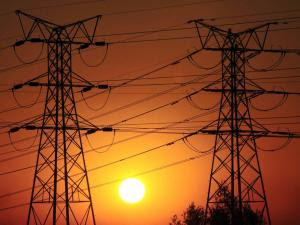This explains why we’re suddenly spending so much more money for the same amount of prepaid electricity units we’re using. First City Power forces their prepaid meter on us & now they’re ripping us off too. To top that all they’ve been charging us interim electricity since they’ve installed the prepaid meter too... what’s next???
Residents charged up over prepaid killer watts
INDEPENDENT NEWSPAPERS
The cold weather has pushed up electricity usage, Eskom warned. Photo: Dumisani Sibeko
Johannesburg - Joburg prepaid electricity consumers are warned to carefully watch their consumption as they could end up being charged an additional R844.25 if they exceed their limit by just one kilowatt.
About 40 000 customers have been converted by the council to prepaid, but customers have described City Power’s inclining block system for prepaid tariffs as confusing and misleading.
City Power did not inform customers that their consumption is reviewed every six months.
The result has been that customers, unaware that they have been moved onto a higher price scale, are complaining bitterly of suddenly getting fewer units for their money since the beginning of last month.
City Power admitted the failure, saying customers were started on the lowest rate of consumption, but every July and December they were rerated according to how much they use and were escalated into a higher category if they exceeded a certain amount.
However, the way the system works is that there is not only an escalating block, but escalating steps within the blocks.
The result is that if a customer exceeds the limit by just one kilowatt in the last of the six-month period, they will be pushed into a higher block and charged that rate for the entire six-month period.
Ron Carlin, a prepaid customer, has worked out the following: if a consumer uses 500kwh a month from July this year to December, they will pay R2 475 at a rate of 82.5c per kilowatt over the six months. But if they used just one extra kilowatt, the payment jumps to R3 214.50.
This, he said, was because the extra kilowatt placed the customer on the next block tariff and meant they would move from paying 82.5c per kilowatt to 107.15c per kilowatt.
This is R739.50 more, plus the R1.07 for the original extra kwh in December, and plus VAT of 14 percent, giving a whopping R844.25 for 1kwh.
“I know this is a marginal costing exercise, but it often takes an extreme example like this to highlight the absurdity of allocating somebody to a different starting block of the sliding scale based on a six-month consumption pattern.
“City Power should simply use the sliding scale on a monthly basis; there is already enough disincentive built in to discourage high kwh usage,” Carlin said.
Abdul Mia asked where and when the council was going to advise him that this was the way the tariff works.
“How many other customers are out there not knowing how this works?
“Are they not supposed to communicate this well in advance to all customers? More importantly, a customer must be notified of this when they move from conventional billing to prepaid.”
Mia said he was advised that if his usage moved back below 500kwh for a period of three months, he should contact the city and it would revise his tariff structure.
“Why is it that when they need to increase, it’s automatic, and when there is need to decrease, I need to contact City Power to make the change?” he
asked.
“I classify myself as an average, middle-class South African household,” he said.
“Why is it then that these middle-class households are the ones paying the highest for their electricity because, clearly, from the City Power table, one can see the increase from 500kWh to the band over 3 000kWh is a mere 7c compared to the exorbitant increases from 0kWh to 500kWh?
“Is this sliding scale a way to tax the middle class the most?”
Charles Hlebela, communications head for the National Electricity Regulator of SA, said:
“While municipalities are expected/ encouraged to implement inclining block rate tariffs in line with our approved design structure, it remains a guideline that cannot be imposed on municipalities as long it is in line with our intent.
“While the City Power-designed inclining tariffs are different from our guidelines, they are still in compliance with the broader principle of subsidisation at low consumption level, while gradually reducing cross-subsidisation as the consumption level increases.”
City power did not respond to a request for comment. it was a costly toasted cheese
The cost works out to six months X 500 units X 82.5c (exclusive of VAT) - R2 475. Then, from January next year to June, the cost remains R2 475, assuming the same consumption pattern.
If, however, just one extra kilowatt had been consumed, for example, in December this year, then from January next year to June, the consumer would pay six months X 500 units X 107.15c, equal to R3 214.50.
This is because the extra 1kWh has put the consumer into a higher consumption block of the sliding scale for the six months from January to June.
This is R739.50 more, plus the R1.07 for the original extra kWh in December, and plus VAT of 14 percent, giving a whopping R844.25 for 1kWh. - The Star















